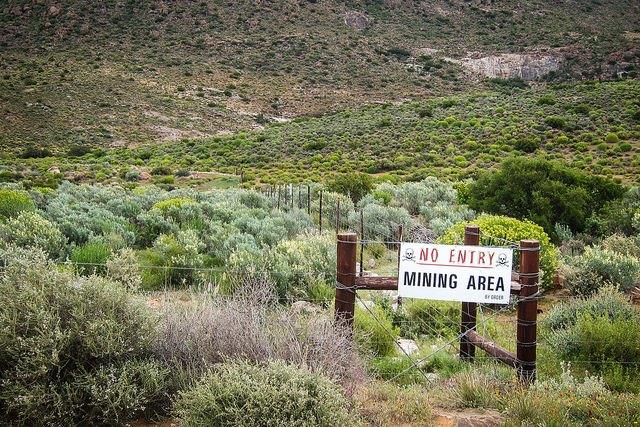
Editor's Note: This post originally appeared on CSR21.org.
By Joseph Kirschke
Early this year, after three months of rolling blackouts that barely kept their country from total darkness, South Africa’s long-suffering people finally saw their energy crisis like a gathering storm. “There is a medium probability of load shedding today and tomorrow,” Eskom, the national utility, tweeted back in January, “with a higher probability on Thursday and Friday.”
South Africa’s power-hungry mining industry, Africa’s largest, causes much of the strain – while struggling to cope. So, too, does the economy, as 2015 growth projections have dropped to 2 percent from 2.50 – possibly slowing to one percent. Some South African miners, having penetrated off-grid areas amid ore depletion and fluctuating markets, meanwhile, are discovering benefits of renewable energy, presenting opportunities beyond South Africa – and the subsector itself.
After the recent collapse of the biggest commodity super-cycle in modern history, alternatives to unpredictably-priced, trucked-in diesel fuel for new mines have seldom enjoyed more appeal. With energy consuming well over 50 percent of off-grid project operating budgets, miners must now re-focus to cost-cutting at current operating mining sites from new exploration and development.
The South African government, for its part, plans to triple electricity by 11.4 gigawatts through a multi-phase, $13 billion alternatives initiative. Bureaucratic tie-ups, unstructured financing and inconsistent regulations, however, have signaled scant relief for Eskom’s beleaguered coal-fired power plants – and the homes and businesses tethered to their electricity.
To this end, Cronimet Mining-Power Solutions, engineered, financed and constructed the country’s first 1.6 megawatt (MW) photovoltaic diesel-electric plant in 2012 at a chromium mine operated by a local subsidiary of its German parent company. The plant and equipment were financed by Cronimet Mining Power Solutions under an independent power producer (IPP) agreement, freeing the mine from the twin burdens of financing capex investments and technology management.
By purchasing only the electricity, the mini-grid has yielded annual savings of 450,000 diesel fuel liters – at an estimated 1,200-ton CO2 abatement rate. In three years the PV/Diesel system will breaks even, Cronimet reported, through diesel savings, with photovoltaic electricity 50 percent below diesel costs and at grid parity with Eskom in remote Limpopo Province.
To leading global producers of platinum, gold, diamonds and magnesium and other minerals in a nation with top green energy potential – namely, 600 MW of PV currently grid-connected – the appeal is elemental. Harmony Gold Mining Co. Ltd., for instance, harvests limited-scale biomass and solar, while Sibanye Gold Ltd. plans for a 150-MW solar plant and Shanta Mining Co. Ltd. installed a smaller pilot PV plant under feasibility. Majors including Anglo American Platinum Ltd., AngloGold Ashanti Ltd. and Newmont Mining Corp., pending carbon credits, are exploring their options.
But challenges are considerable: Financing for any mine from international lenders, contingent on estimates of mineral reserves and operational lifecycles, is an uncertain, complex undertaking – particularly at the outset. More high, up-front costs – in already risky areas – can tip the scales heavily. On-site technical expertise and long delivery lead-times for expensive parts yield further disincentives.
On the other hand, most new African mines are in isolated areas where usually underserved, sometimes-volatile, communities have their own requirements – namely, a social license to operate. Miners worldwide have long paid dearly for neglecting such populations – including their access to resources like energy.
Indeed, analysts have predicted that some 80 percent of African mines will eventually be located in off-grid areas. Private sector IPP developers, such as Cronimet, have picked up on these market forces and are offering miners a one-stop-shop for off-balance sheet, on-site PV electricity to reduce operating costs, increase energy reliability and create a natural hedge against rising fossil fuel and centralized energy prices.
However, advanced renewable energy use by miners in Chile and, to a lesser extent Australia, demonstrate South Africa’s mines can share power with nearby villages – while advancing economies of scale and third-party supplier integration. With wind turbine, solar and hydropower spanning the globe, potential for energy-sharing and providing legacy systems beyond the life of mine inside and outside South Africa across industries – like agriculture, tourism, the service sector and forestry – is clear.
So, too, are financing opportunities: The U.N. Environment Program (UNEP), for example, reported 2014 green energy investment – led by wind and solar – increasing 17 percent to $270 billion. Forerunners are social impact investors, philanthropies, ethical funds and large financial institutions like signatories to the U.N.’s own Principles for Responsible Investment (UNPRI) – managing $34 billion in assets, representing 20 percent of global capital markets.
The rush to extract South Africa’s geological riches, beginning in the late 1800s, has never been a forgiving enterprise: Some 80,000 miners have since lost their lives; millions more have been displaced. Ongoing labor tensions, dangerous working conditions and violence – like the 2012 killing of 34 striking platinum miners by security forces – are a bitter legacy of Apartheid rule.
But fresh investor scrutiny can only improve the equation. And with International Finance Corp. forecasts of “substantial” green energy use at most mines by 2025, South Africa’s can set a precedent – while helping one of the world’s most undeveloped regions emerge from the shadows.
Image credit: Flickr/jbdodane
Joseph Kirschke is a consultant who advises mining companies on sustainability and a former editor at Mining Media International, the largest U.S. publishing house covering the mining industry.
CSR21.org exists as a platform for news, analysis and opinion: bylined guest pieces represent the views of the author(s) and may not reflect the official opinions or views of CSR21.
TriplePundit has published articles from over 1000 contributors. If you'd like to be a guest author, please get in touch!














